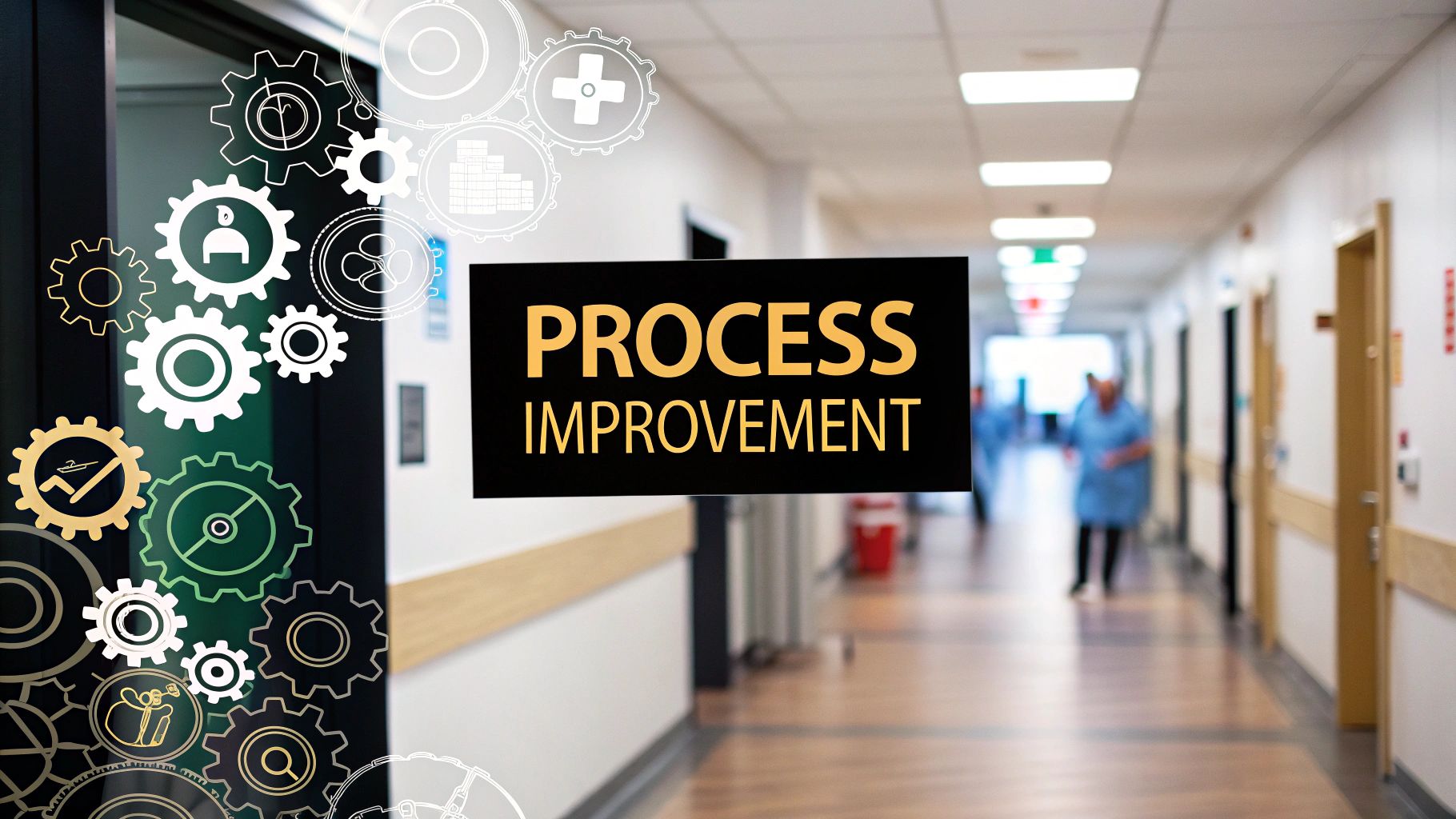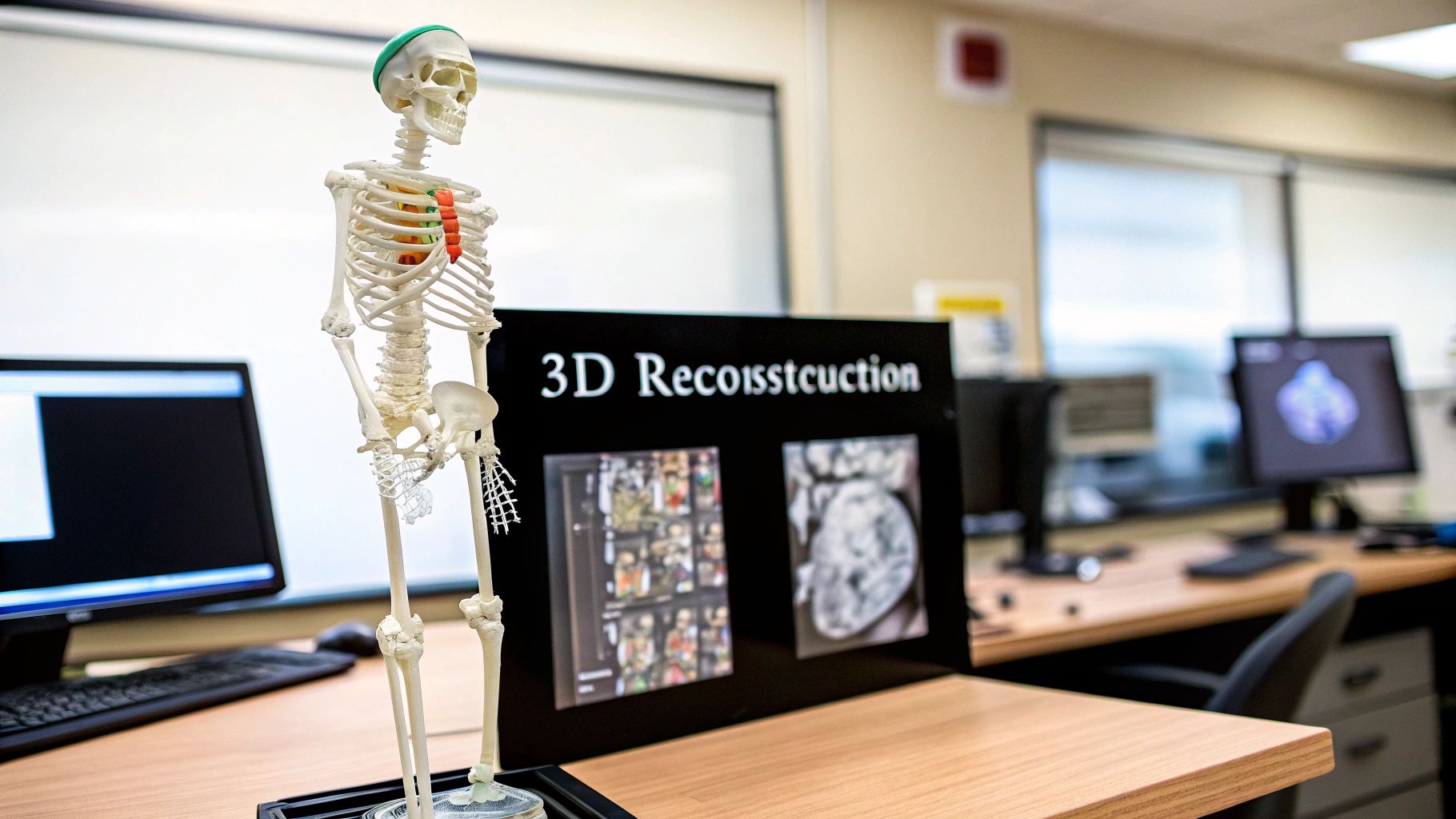Revolutionizing Healthcare: A Deep Dive into Medical APIs
Medical APIs are reshaping healthcare by enabling seamless data flow and powering innovative solutions. This listicle provides 10 essential medical APIs empowering advancements in telehealth, AI diagnostics, and personalized medicine. Streamline workflows, improve diagnostic accuracy, and unlock new research possibilities with these key tools. Explore this list to find the API that best suits your healthcare needs.
1. PYCAD
PYCAD is a specialized medical imaging AI solutions provider that offers end-to-end services, covering data handling, model training, and deployment. This makes them a valuable partner for organizations seeking to integrate AI into their medical imaging workflows, improving diagnostic accuracy and operational efficiency. PYCAD targets a variety of stakeholders, including medical device manufacturers, healthcare technology companies, research institutions, and more, offering tailored solutions for unique challenges. Their focus is on delivering tangible improvements in patient outcomes through cutting-edge AI technology.
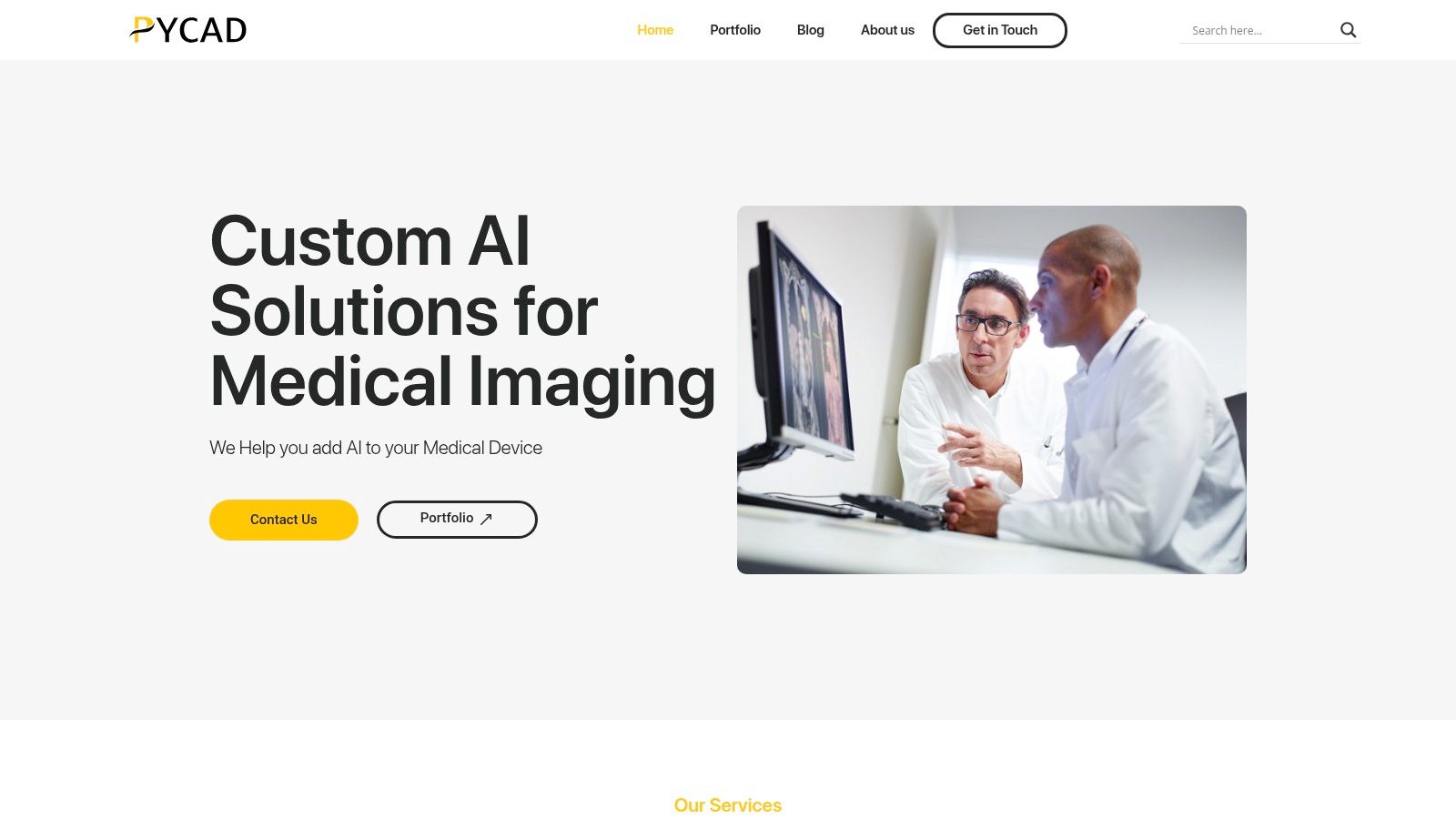
PYCAD distinguishes itself by offering a complete pipeline, from data pre-processing (annotation, anonymization, and multi-format support including DICOM) to custom model development and deployment. This full-service approach streamlines the AI integration process, saving organizations valuable time and resources. For example, a medical device manufacturer could leverage PYCAD's services to develop an AI-powered diagnostic tool that analyzes medical images directly from their device, offering real-time insights to clinicians. A research institution could utilize PYCAD's platform for complex image analysis, accelerating their research progress. DICOM communication and transfer companies could integrate PYCAD's AI capabilities to enhance their offerings with automated image processing and analysis during transfer.
While pricing information is not publicly available, potential clients can contact PYCAD directly for tailored quotes. This personalized approach allows PYCAD to understand specific project requirements and offer bespoke solutions. Technical requirements will also vary depending on the project scope, with PYCAD offering flexible deployment options including cloud-based APIs on GCP/AWS and custom MVP UIs. This flexibility allows for integration with existing infrastructure and minimizes disruption to workflows.
Key Features and Benefits:
- End-to-End AI Integration: Simplifies AI adoption by covering all stages from data preparation to deployment.
- Data Handling Expertise: Handles diverse medical image formats, including DICOM, and offers annotation and anonymization services.
- Custom Model Training: Develops AI models tailored to specific clinical needs and data sets.
- Flexible Deployment Options: Offers deployment via APIs on major cloud platforms (GCP/AWS) or through custom-built user interfaces.
- Client-Centric Approach: Works closely with clients to understand their unique challenges and provide tailored solutions.
Pros:
- Comprehensive AI integration streamlines development and deployment.
- Proven track record of successful projects demonstrates practical expertise.
- Focus on diagnostic accuracy and operational efficiency directly benefits healthcare providers.
- Strong client collaboration ensures tailored solutions for diverse needs.
- Robust support throughout the entire project lifecycle.
Cons:
- Being a relatively new company (founded in 2023) might raise concerns about long-term stability, though their rapid project completion rate suggests strong momentum.
- Specialization in medical imaging might limit applicability to other tech areas.
Implementation/Setup Tips:
While specific setup details will vary depending on the project, prospective clients should be prepared to discuss their specific needs and data requirements with PYCAD during initial consultations. This collaborative approach ensures that the solution is tailored to their unique context and integrates seamlessly into existing workflows.
Comparison with Similar Tools:
While several companies offer AI solutions for medical imaging, PYCAD's end-to-end approach and focus on custom solutions set them apart. Many competitors specialize in specific aspects of the AI pipeline (e.g., only data annotation or only model training), requiring clients to manage multiple vendors. PYCAD’s comprehensive service model simplifies this process, making them an attractive option for organizations looking for a single, integrated solution.
Website: https://pycad.co
PYCAD earns its place on this list by offering a comprehensive and client-centric approach to medical imaging AI. Their focus on practical application, combined with a strong track record of successful projects, makes them a valuable partner for organizations seeking to harness the power of AI to improve patient care.
2. Human API
Human API offers a comprehensive platform for accessing and integrating patient health data from a vast network of sources. This makes it a powerful tool for developers building health applications, researchers conducting clinical studies, and healthcare organizations seeking to improve patient care through data-driven insights. Human API streamlines the complex process of gathering and standardizing health information, allowing developers to focus on building innovative solutions rather than wrestling with disparate data formats. This platform is particularly valuable for those needing a broad reach across the US healthcare system.
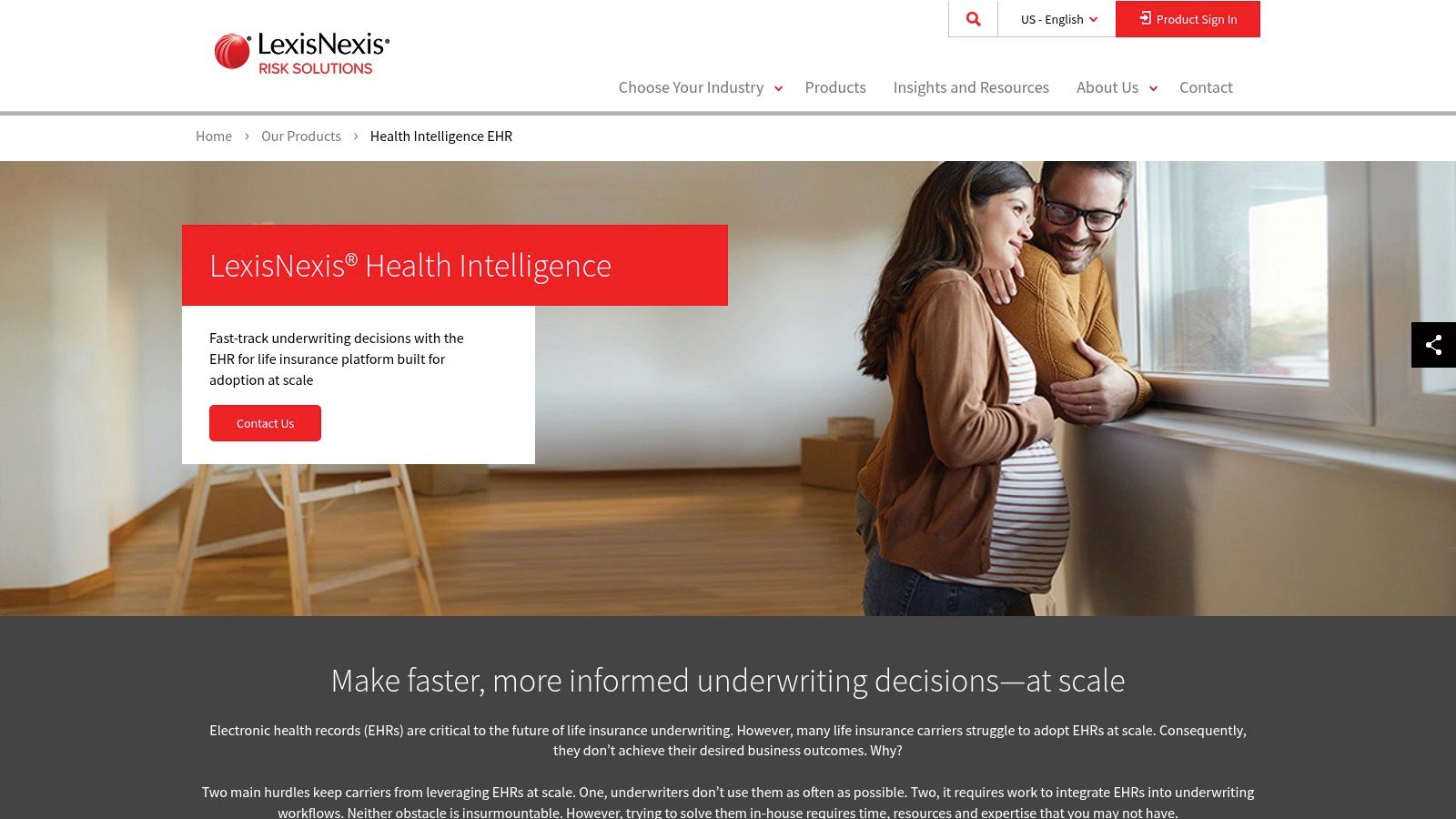
For medical device manufacturers, Human API can facilitate the development of connected devices that leverage real-time patient data to personalize treatment and improve outcomes. Healthcare technology companies can use the API to build patient portals, telehealth platforms, and remote monitoring applications. Researchers can leverage the aggregated and anonymized data for large-scale studies, accelerating medical discoveries. Hospital and clinic IT departments can integrate Human API to streamline data exchange and improve interoperability between systems. Academic institutions involved in medical imaging research can utilize the platform to access diverse datasets and develop advanced image analysis algorithms. Medtech startups, especially those focusing on patient engagement and personalized medicine, will find Human API's comprehensive data connectivity highly advantageous. Even companies specializing in DICOM communication and transfer can benefit by integrating Human API to offer a broader spectrum of data sources to their clients.
Features and Benefits:
- Broad Connectivity: Human API boasts connectivity to over 90% of US hospitals and clinics, including EHR systems, pharmacies, labs, and wearable devices. This broad reach simplifies data acquisition from multiple sources.
- Normalized Data: The platform normalizes data from different sources into a consistent format, eliminating the need for developers to handle complex data transformations. This significantly reduces development time and effort.
- Real-Time Data: Human API allows for real-time data retrieval, enabling dynamic updates and timely interventions.
- HIPAA Compliance: The platform adheres to HIPAA regulations, ensuring secure and compliant data transfer and storage, which is crucial for maintaining patient privacy and trust.
- Consumer-Mediated Data Sharing: Patients control which data is shared and with whom, empowering them and bolstering trust in the data sharing process.
- Developer-Friendly Tools: Robust documentation, SDKs, and developer support facilitate seamless integration and accelerate development cycles.
Pricing:
Human API's pricing is tailored to specific needs and usage volume. Contacting their sales team is necessary for a custom quote. This premium pricing model, while potentially a barrier for smaller developers, reflects the comprehensive nature of the platform and its extensive connectivity.
Technical Requirements:
Integration with Human API involves utilizing their RESTful API and associated SDKs. Familiarity with API integration and data handling in common programming languages is required.
Pros:
- Comprehensive connectivity to the majority of US healthcare providers.
- Simplified integration with a unified API for all data sources.
- Strong emphasis on patient consent and data privacy.
- Excellent documentation and developer tools.
Cons:
- Premium pricing may be prohibitive for smaller developers or projects with limited budgets.
- Some data sources may have delayed updates, which could affect real-time applications.
- Implementing complex use cases may require significant development effort despite the standardized data.
Implementation Tips:
- Thoroughly review the documentation and available SDKs.
- Clearly define your data requirements and choose the appropriate API endpoints.
- Implement robust error handling and data validation procedures.
- Prioritize user experience and ensure clear communication with patients regarding data sharing.
Website: https://www.humanapi.co/
Human API earns its place on this list due to its comprehensive coverage, simplified integration process, and strong focus on patient privacy. While the premium pricing may be a consideration, its benefits often outweigh the cost for projects requiring broad access to normalized health data.
3. IBM Watson Health
IBM Watson Health offers a comprehensive suite of APIs designed to harness the power of AI and machine learning for advanced health data analysis and clinical decision support. These APIs empower developers to create cutting-edge applications capable of interpreting complex medical information, identifying hidden patterns, and generating evidence-based recommendations. This makes it a powerful tool for a range of stakeholders including medical device manufacturers, healthcare technology companies, medical researchers, and hospital IT departments.
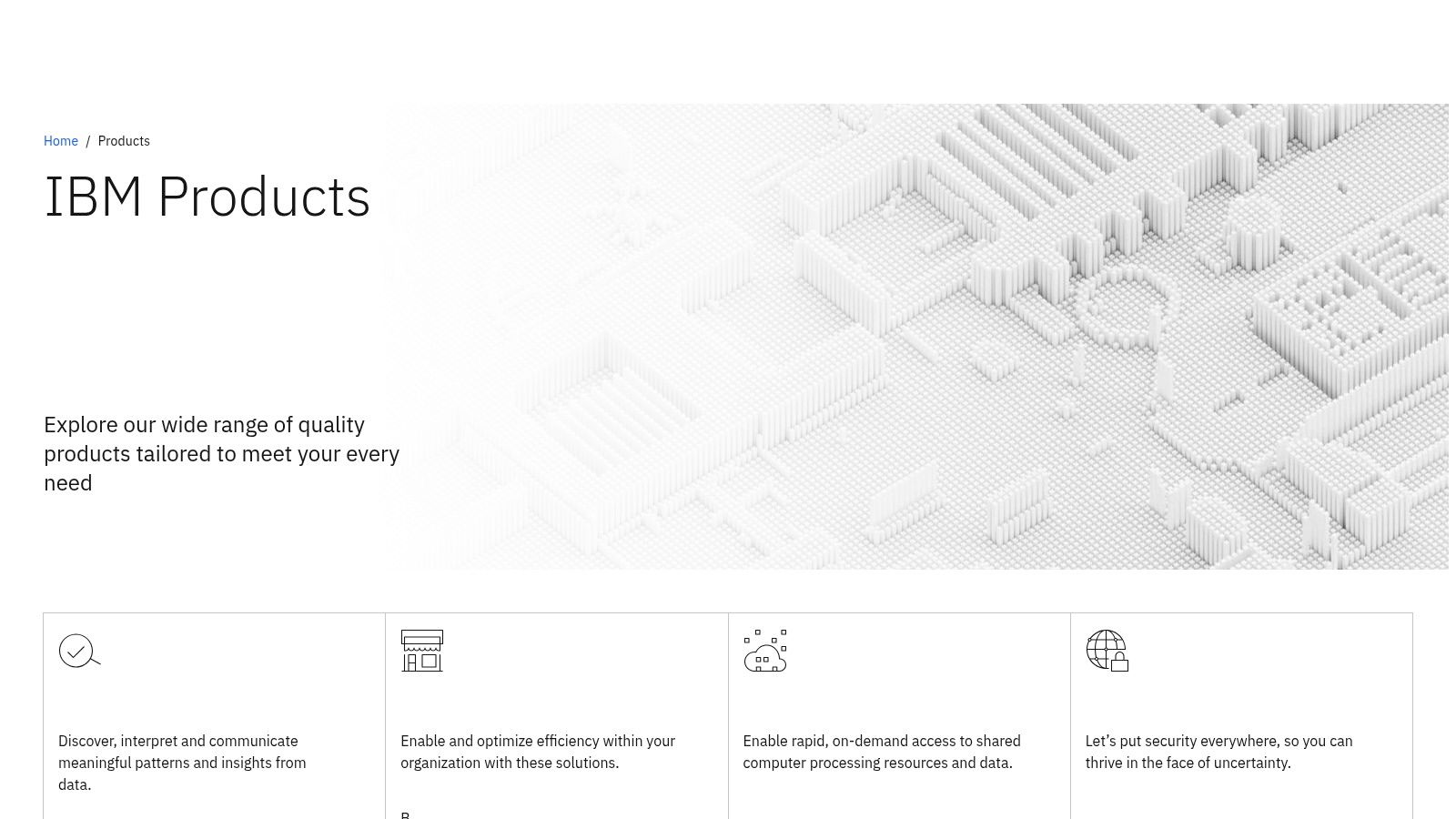
Its inclusion in this list is warranted due to its robust capabilities and potential to transform healthcare. Specifically, features like natural language processing for medical text analysis allow for the automated extraction of key information from clinical notes and research papers. The medical image analysis capabilities can assist radiologists in identifying anomalies and making more accurate diagnoses. Furthermore, the clinical decision support tools can provide physicians with real-time, evidence-based insights at the point of care. Drug discovery and health data analytics APIs round out the suite, offering solutions for pharmaceutical research and population health management.
For example, a medical device manufacturer could utilize Watson Health APIs to develop an AI-powered diagnostic tool that analyzes medical images and provides preliminary diagnoses. A research institution might use the natural language processing capabilities to analyze large datasets of patient records to identify trends and risk factors for specific diseases. Hospital IT departments could leverage Watson Health to build applications that streamline clinical workflows and improve patient care coordination.
While IBM doesn't publicly list pricing for all Watson Health APIs, it generally follows a tiered subscription model based on usage and required features. Contacting IBM directly is necessary for detailed pricing information tailored to specific needs. Technical requirements vary depending on the specific API and its intended use. Generally, a strong understanding of API integration, data formats (like DICOM for medical imaging), and potentially some experience with AI/ML concepts is recommended. IBM provides comprehensive documentation and support resources to assist with implementation.
Compared to similar tools like Google Cloud Healthcare API and Microsoft Azure API for FHIR, IBM Watson Health differentiates itself with its focus on AI-driven insights and clinical decision support. While other platforms offer robust data storage and interoperability solutions, Watson Health emphasizes advanced analytics and actionable intelligence.
Implementation Tips:
- Start with a well-defined use case: Clearly identify the problem you're trying to solve and how Watson Health APIs can contribute to the solution.
- Explore the available documentation: Familiarize yourself with the specific APIs relevant to your project and their technical requirements.
- Utilize the available support resources: IBM provides comprehensive documentation, tutorials, and support channels to assist with implementation challenges.
- Consider data privacy and security: Ensure compliance with HIPAA and other relevant regulations when handling sensitive patient data.
- Plan for data training: Some Watson Health services, particularly those involving machine learning, require substantial data training for optimal performance.
Pros:
- Powerful AI and machine learning capabilities.
- Backed by extensive research and clinical validation.
- Comprehensive documentation and support resources.
- Regular updates with the latest medical knowledge.
Cons:
- High cost structure for comprehensive access.
- Complex implementation requiring specialized knowledge.
- Some services require substantial data training.
Website: https://www.ibm.com/watson-health (Note: IBM has restructured some of its Watson Health offerings. The linked website may redirect to a more general IBM page, and you may need to navigate to find specific API information.)
4. FHIR (Fast Healthcare Interoperability Resources)
FHIR (Fast Healthcare Interoperability Resources) is quickly becoming the lingua franca of healthcare data exchange. It's not an API itself, but rather a robust standard developed by HL7 that dictates how healthcare information is structured and exchanged electronically. Most modern medical APIs adhere to the FHIR standard, making it essential knowledge for anyone working with healthcare data. This means that systems built with FHIR can readily communicate, sharing crucial information like patient demographics, medical history, medications, observations, and diagnostic reports. This interoperability is the key to unlocking a new era of connected healthcare. FHIR solutions provide REST API access to this data, utilizing common web standards like JSON, XML, HTTP, and OAuth, making integration significantly simpler than legacy systems.
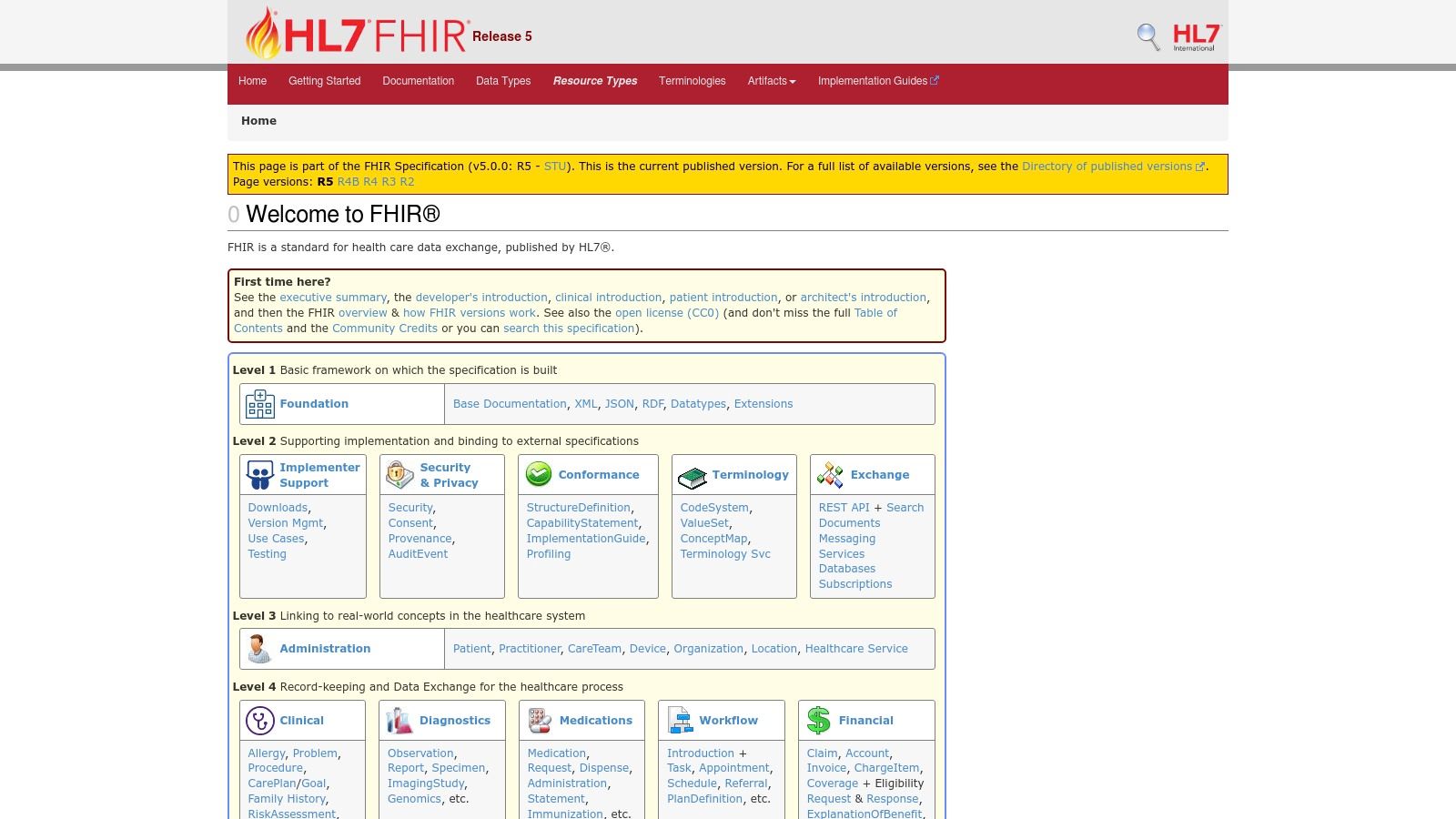
For organizations dealing with healthcare data, FHIR offers several compelling advantages. Its standardized data formats and elements, defined as "resources," facilitate seamless data exchange between different systems, regardless of their underlying architecture. This is crucial for medical device manufacturers needing to integrate their products with hospital systems, healthcare technology companies building interoperable platforms, and researchers needing to access and analyze diverse datasets.
Practical Applications and Use Cases:
- Medical Device Integration: FHIR enables medical devices to directly communicate with Electronic Health Records (EHRs), streamlining data capture and reducing manual entry. For example, a blood pressure monitor could automatically upload readings into a patient's chart.
- Clinical Research: Researchers can use FHIR APIs to access de-identified patient data across multiple healthcare systems, accelerating research and discovery. This can be invaluable for identifying trends, developing new treatments, and improving patient outcomes.
- Telehealth Platforms: FHIR enables real-time data exchange between patients and healthcare providers in telehealth applications. This allows for remote monitoring, virtual consultations, and timely interventions.
- Public Health Reporting: FHIR facilitates the efficient and accurate reporting of public health data, such as disease outbreaks and immunization rates.
- Health Information Exchange (HIE): FHIR allows disparate healthcare systems within a region or country to seamlessly exchange patient information, improving care coordination and reducing duplication of efforts.
Technical Requirements and Implementation Tips:
Implementing FHIR requires a solid understanding of the standard and its various resources. While FHIR simplifies interoperability, the complexity of healthcare data still necessitates significant domain knowledge. Developers need to be familiar with RESTful API principles, JSON or XML data formats, and OAuth for authentication and authorization.
- Start with the FHIR specification: The HL7 FHIR website (https://www.hl7.org/fhir/) provides comprehensive documentation and resources.
- Utilize existing FHIR libraries and tools: Several open-source libraries and tools are available to simplify FHIR implementation.
- Focus on specific use cases: Start with a well-defined use case and gradually expand your implementation.
- Testing and validation: Thoroughly test your FHIR implementation to ensure interoperability and data integrity.
Comparison with Similar Tools:
While older standards like HL7 v2 and CDA exist, FHIR's modern, web-based approach, focusing on RESTful APIs and human-readable data formats, makes it far more developer-friendly and adaptable to today’s interconnected healthcare landscape.
Pros:
- Widely adopted industry standard, ensuring future-proof solutions.
- Excellent interoperability between different healthcare systems.
- Strong community support and extensive documentation.
- Flexibility for various healthcare scenarios.
Cons:
- Implementation variations can still cause compatibility issues, requiring careful planning and testing.
- Complexity of healthcare data demands significant domain knowledge.
- May require additional layers for specialized functionality.
FHIR's inclusion in this list is essential. Its growing adoption as the standard for healthcare interoperability makes it crucial for any organization or individual working in the healthcare technology space. By embracing FHIR, stakeholders can unlock the potential of connected healthcare, paving the way for improved patient care, more efficient research, and a more robust healthcare ecosystem.
5. NCBI (National Center for Biotechnology Information) API
The NCBI (National Center for Biotechnology Information) API provides a powerful suite of tools for accessing a vast trove of biomedical and genomic data, including resources like PubMed, GenBank, and other NCBI databases. This makes it an indispensable resource for anyone working with biomedical data, from researchers and scientists to healthcare technology companies and medical device manufacturers. The NCBI APIs empower developers to programmatically access scientific literature, genetic sequences, clinical genomic information, and much more, enabling a wide range of applications.
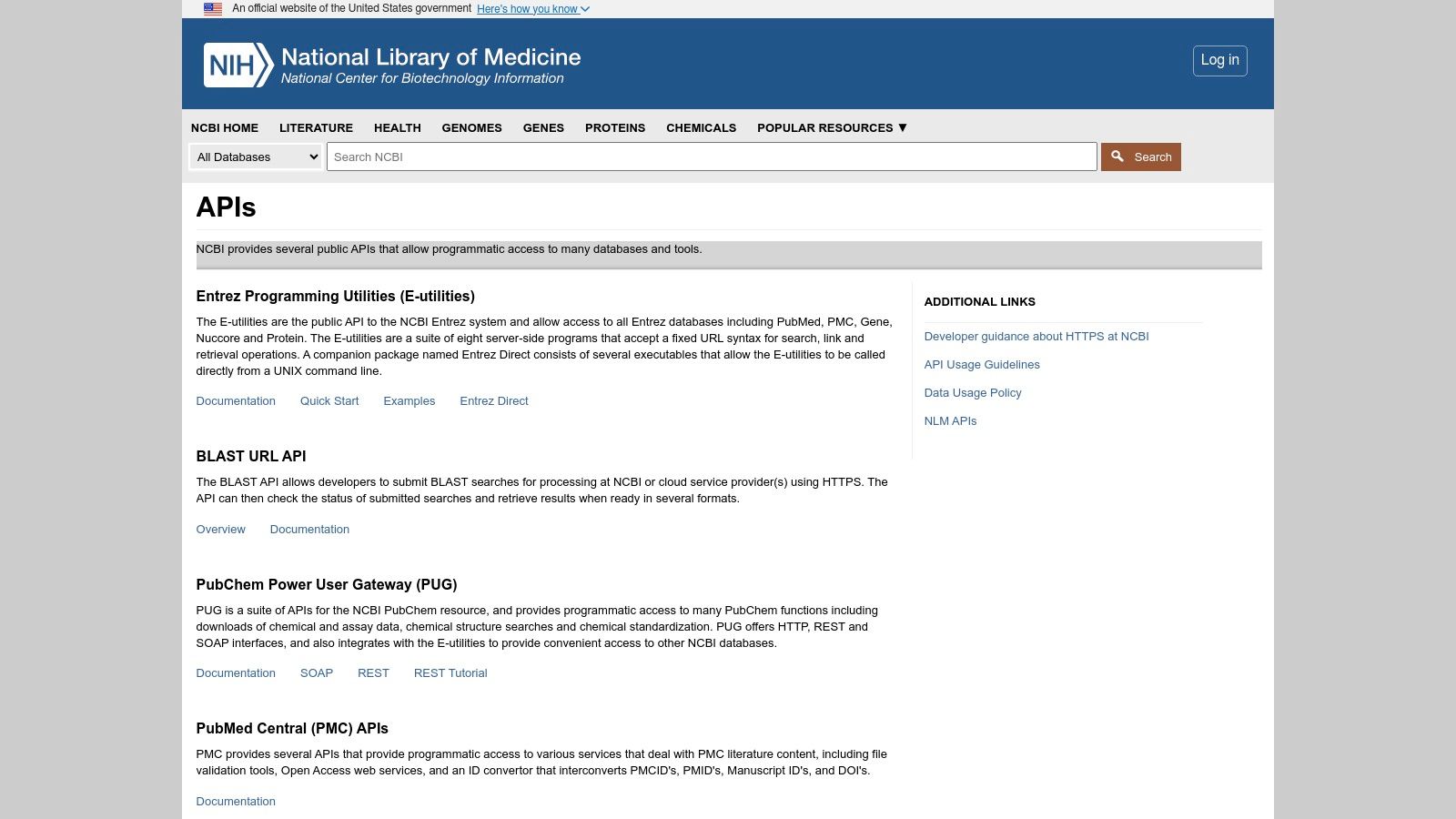
For medical device manufacturers, the NCBI API can be invaluable for researching relevant literature during the development process, identifying potential biomarkers, and understanding the genetic basis of diseases. Healthcare technology companies can leverage the API to integrate up-to-date research findings into their applications, develop diagnostic tools, and build knowledge bases for personalized medicine. Researchers and scientists can use the API to automate literature reviews, perform large-scale genomic analyses, and access the latest research data for their studies. Hospital and clinic IT departments, along with academic institutions, can utilize the NCBI API for tasks such as integrating genomic information into electronic health records, facilitating data analysis for clinical trials, and enhancing bioinformatics pipelines. Medtech startups focusing on areas like genomic sequencing or drug discovery can utilize the API to quickly access relevant data and accelerate their research and development efforts. Companies specializing in DICOM communication and transfer can potentially use NCBI data to enrich medical images with relevant genomic information.
Features and Benefits:
- Access to PubMed: Retrieve and analyze medical literature, build custom search tools, and stay up-to-date on the latest research publications. This is crucial for literature reviews, competitive analysis, and identifying research gaps.
- Retrieval of Genetic and Protein Sequence Data: Access GenBank and other sequence databases to retrieve and analyze genetic and protein sequences, enabling research in areas like genomics, proteomics, and drug discovery.
- Clinical Genomic Information Access: Integrate clinical genomic data into applications and research projects, facilitating personalized medicine initiatives and genetic disease research.
- Comprehensive Taxonomic Data: Access and integrate taxonomic data for various organisms, crucial for evolutionary studies, ecological research, and understanding biodiversity.
- Integration with Bioinformatics Tools: The NCBI API seamlessly integrates with numerous bioinformatics tools, streamlining workflows and enabling more efficient data analysis.
Pros:
- Free Access: The NCBI API provides free access to a vast amount of valuable scientific data, making it a cost-effective resource for researchers and developers.
- Comprehensive Coverage: The API covers a wide range of biomedical literature and data, offering a one-stop shop for many research needs.
- Regular Updates: NCBI databases are regularly updated with the latest research findings, ensuring access to current information.
- Reliable Service: The API is backed by the US government, providing a stable and reliable platform for data access.
Cons:
- Complex Data Structures: The data returned by the NCBI API can be complex and require domain expertise to parse and interpret effectively.
- Rate Limits: The API has rate limits to prevent abuse, which can be a constraint for large-scale data retrieval. Be sure to consult the documentation for specific rate limits.
- Limited Technical Support: While documentation is available, the level of technical support may be limited compared to commercial API options.
Implementation and Setup Tips:
- Familiarize yourself with the E-utilities: The E-utilities are a set of server-side programs that provide access to various NCBI databases. Understanding how to use them is essential for effective API utilization.
- Use a suitable programming language and library: Several programming languages (Python, Java, R) offer libraries specifically designed for interacting with the NCBI API, simplifying the development process. Biopython, for example, is a popular choice for Python developers.
- Respect rate limits: Adhere to the API's rate limits to avoid interruptions in data access. Implement proper error handling and retry mechanisms to deal with potential rate limit issues.
- Consult the documentation: The NCBI provides comprehensive documentation for its APIs, including examples and tutorials.
Website: https://www.ncbi.nlm.nih.gov/home/develop/api/
The NCBI API earns its place on this list due to its free access to a vast and comprehensive collection of biomedical and genomic data. While navigating the complex data structures might require some technical expertise, the potential benefits for research, development, and innovation in the medical and healthcare fields are immense.
6. Infermedica API
The Infermedica API is a powerful tool leveraging artificial intelligence to provide diagnostic support and triage functionality for a variety of healthcare applications. It analyzes patient-reported symptoms using natural language processing and offers preliminary diagnostic suggestions based on a constantly updated medical knowledge base. This makes it a valuable resource for streamlining patient care pathways and improving diagnostic efficiency. Its potential applications range from symptom checkers in telehealth platforms to aiding medical professionals in differential diagnosis.
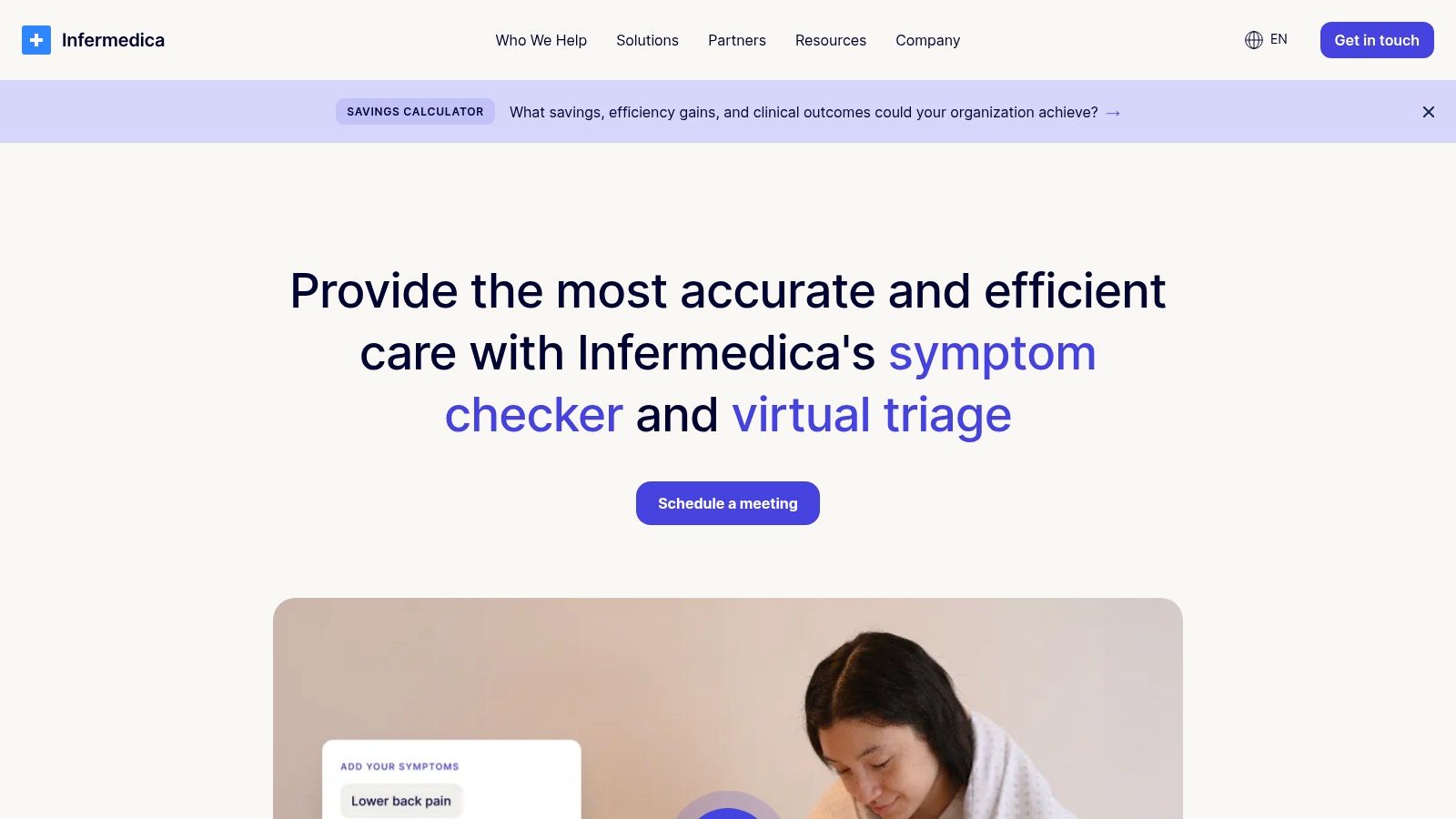
Infermedica's strength lies in its sophisticated AI-driven diagnostic engine. Unlike simpler symptom checkers, it goes beyond basic keyword matching and utilizes complex algorithms to analyze the interplay of symptoms, patient demographics, and risk factors. This allows for more accurate and nuanced diagnostic suggestions. The API’s triage functionality can also help prioritize patients based on the urgency of their condition, which can be invaluable in telehealth or emergency room settings. Furthermore, the platform supports multiple languages, broadening its accessibility and applicability in diverse healthcare environments. The customizable medical knowledge base is another key advantage, allowing for tailoring the API to specific specialties or regional medical guidelines.
For medical device manufacturers, integrating the Infermedica API into diagnostic tools can enhance their capabilities and provide clinicians with valuable decision support. Healthcare technology companies building telehealth platforms can leverage the API to offer symptom checking, triage, and preliminary diagnosis features, improving patient access to care and reducing the burden on healthcare systems. Researchers can use the API to analyze large datasets of patient symptoms and explore new diagnostic patterns. Hospital and clinic IT departments can integrate the API into existing systems to streamline patient intake and triage processes. Even academic institutions focusing on medical imaging could use the API to correlate symptoms with imaging findings, potentially leading to more accurate diagnoses. Medtech startups and companies working with DICOM communication and transfer can integrate the Infermedica API to enrich their data analysis and offer more comprehensive patient insights.
While Infermedica offers robust functionality, there are considerations to bear in mind. Careful integration is crucial to avoid potential medical liability issues, as the API should be used as a support tool rather than a replacement for professional medical judgment. Supplementary human medical review remains essential for confirming any diagnostic suggestions provided by the API. Furthermore, access to premium features, such as advanced diagnostic algorithms and customized knowledge bases, requires higher pricing tiers, which may impact budget considerations. Specific pricing information isn't publicly available and requires contacting Infermedica directly. Technical requirements for integration involve RESTful API calls and handling JSON data formats, requiring development expertise.
Compared to other medical APIs, Infermedica stands out with its sophisticated diagnostic capabilities and comprehensive feature set. While some APIs focus solely on symptom checking, Infermedica offers a more complete solution with triage and diagnostic support. For applications where in-depth diagnostic analysis is critical, Infermedica offers a significant advantage.
Implementation tips include thorough testing and validation of the API integration within the specific healthcare workflow. Clearly communicating to users that the API provides preliminary suggestions and that professional medical advice should always be sought is essential. Regularly monitoring the API's performance and updating the medical knowledge base ensures accuracy and reliability. Finally, adhering to all relevant data privacy regulations, including HIPAA and GDPR, is paramount. For more detailed information on implementation and to explore specific use cases, visit their website: https://infermedica.com/
7. DrChrono API
The DrChrono API offers a robust solution for developers seeking deep integration with a comprehensive EHR platform. It provides access to a wealth of patient data, scheduling functionalities, billing processes, and other essential clinical features, making it particularly attractive to independent practices and specialists looking to customize their workflows and build interconnected healthcare applications. This API stands out for its focus on practice management and its comprehensive access to patient records within the DrChrono ecosystem.

For medical device manufacturers, the DrChrono API can enable seamless data exchange between devices and patient records, streamlining data collection and analysis. Healthcare technology companies can leverage the API to develop innovative patient engagement tools, telehealth platforms, or specialized applications for managing chronic conditions. Researchers and scientists can potentially utilize de-identified patient data (with proper consent and ethical approvals) for clinical studies and data analysis. Hospital and clinic IT departments operating with DrChrono as their EHR system can build custom integrations to connect different systems, automate tasks, and enhance interoperability within their infrastructure. Even medtech startups aiming to develop patient-facing apps or clinic management solutions can benefit from the rich feature set of the DrChrono API. DICOM communication and transfer companies, while not directly interacting with the core functionality of the DrChrono API, could potentially integrate with systems built upon it to streamline image management within the DrChrono environment.
The DrChrono API boasts features such as complete EHR data access and management, enabling developers to read, write, and update patient records. Patient scheduling and appointment management features allow for building applications that streamline booking and optimize clinic workflows. Medical billing integration simplifies payment processing and revenue cycle management within connected applications. E-prescribing capabilities further enhance the clinical utility, and the ability to create custom medical forms adds flexibility to data collection and patient interactions.
Pros:
- Comprehensive access to practice management features: Offers a single point of access for integrating with core practice functionalities.
- Well-documented RESTful API: Facilitates easier integration and development.
- Support for both web and mobile healthcare applications: Enables development across various platforms.
- HIPAA compliant data exchange: Crucial for maintaining patient privacy and security.
Cons:
- Primarily focused on outpatient settings: May not be suitable for all healthcare environments.
- Requires DrChrono as the underlying EHR system: Limits flexibility for practices using other EHR platforms.
- Integration complexity for certain workflows: Certain complex integrations might require significant development effort.
Pricing and Technical Requirements: Specific pricing details for the DrChrono API are not publicly available and are usually discussed on a per-project basis. Technical requirements include familiarity with RESTful APIs and adherence to DrChrono's API documentation and usage guidelines.
Comparison with Similar Tools: While other EHR systems like Epic and Cerner offer their own APIs, DrChrono's focus on independent practices and specialists makes it a compelling alternative. Its relatively simpler integration process and focus on practice management differentiates it from enterprise-level EHR APIs.
Implementation/Setup Tips: Thoroughly review the official DrChrono API documentation. Begin with a well-defined scope for your integration project and leverage the available SDKs and code samples. Testing and validation in a sandbox environment are highly recommended before deploying to a production setting.
Website: https://www.drchrono.com/api/
By offering a well-rounded suite of features and functionalities targeted towards improving practice management and patient care within the DrChrono ecosystem, the DrChrono API earns its place on this list. Its strength lies in its comprehensive access to patient data, scheduling, billing, and other clinical functionalities, facilitating the development of innovative healthcare applications.
8. Redox
Redox isn't a medical API in the traditional sense; instead, it's a powerful integration platform acting as a universal translator for healthcare data. It streamlines the often complex process of connecting to various Electronic Health Record (EHR) systems and other healthcare data sources by offering a single, standardized API. For developers, this means no more wrestling with the unique quirks and complexities of individual EHR APIs. Imagine needing to connect your medical device to multiple hospital systems, each with its own specific API and data format. Instead of building and maintaining separate integrations for each, Redox allows you to connect once and access data from all of them through a unified interface. This dramatically reduces development time and ongoing maintenance costs.
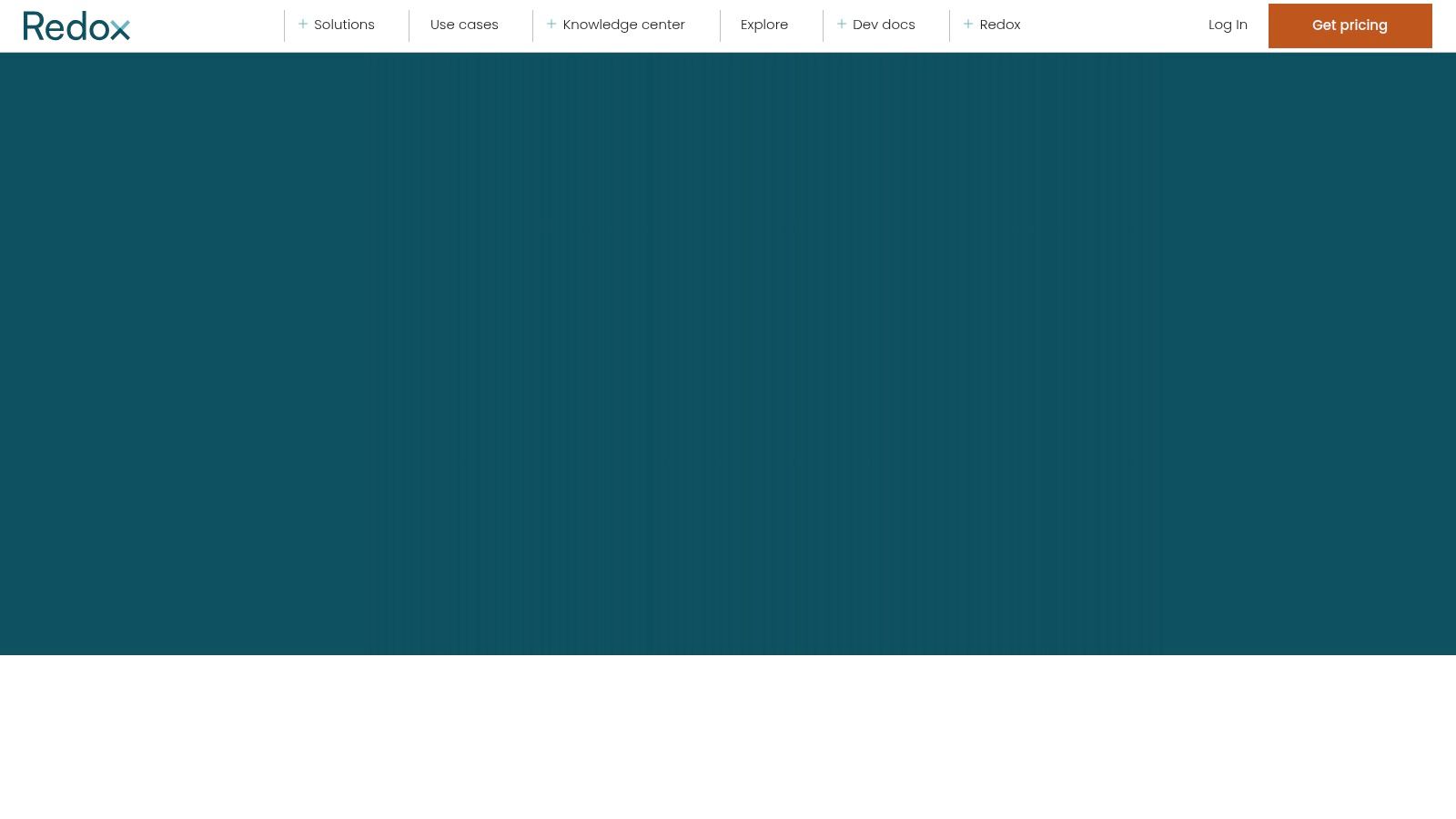
Redox earns its place on this list because it addresses a critical pain point in healthcare IT: interoperability. Its value proposition is especially relevant for organizations dealing with multiple EHR integrations. Key features like normalized data models, pre-built connections to major healthcare systems, real-time data exchange capabilities, and secure messaging and notification systems make it a robust solution for a variety of use cases. For instance, medical device manufacturers can leverage Redox to seamlessly integrate their products with different EHR systems in various hospitals, enabling real-time data capture and analysis. Similarly, healthcare technology companies developing patient portals or telehealth platforms can use Redox to simplify patient data access from disparate EHRs. Medical researchers can also benefit from streamlined data aggregation from multiple sources for large-scale studies.
Features and Benefits:
- Single API Connection: Connect to multiple EHR systems through a single, unified API.
- Normalized Data Models: Access data in a consistent format, regardless of the source system.
- Pre-built Connections: Leverage existing integrations with major healthcare systems, accelerating deployment.
- Real-Time Data Exchange: Enables real-time data flow for applications requiring up-to-the-minute information.
- Secure Messaging and Notifications: Facilitates HIPAA-compliant communication and alerts.
Pros:
- Simplified Integration: Drastically reduces the complexity of connecting to multiple healthcare systems.
- Reduced Development Time and Costs: Streamlines development and minimizes ongoing maintenance.
- HIPAA Compliant: Robust security features ensure compliance with healthcare regulations.
- Extensive Network: Pre-built connections to a wide range of healthcare systems.
Cons:
- Subscription Costs: Redox operates on a subscription model, which can be a significant expense depending on usage. Specific pricing information isn't publicly available and requires contacting their sales team.
- Additional Layer: Introduces an additional layer in the technology stack, which needs to be managed.
- Customization Limitations: While Redox offers extensive functionality, there might be limitations for highly specialized integration needs.
Implementation and Setup Tips:
While Redox simplifies integrations, careful planning is still crucial. Begin by clearly defining your integration requirements and data needs. Engage with the Redox team early to discuss your specific use case and determine the optimal integration strategy. Leverage their pre-built connections whenever possible to expedite the process.
Comparison with Similar Tools:
While some other platforms offer integration services, Redox differentiates itself with its focus on healthcare data standardization and its extensive network of pre-built connections. Alternatives like Mirth Connect offer more open-source flexibility but often require greater development effort.
Website: https://www.redoxengine.com/
Redox is a valuable tool for any organization looking to simplify and streamline their healthcare data integrations. While the subscription cost needs to be considered, the long-term benefits in terms of reduced development time, maintenance overhead, and enhanced interoperability often outweigh the expense.
9. OpenFDA
OpenFDA offers free and open access to a wealth of public datasets from the U.S. Food and Drug Administration (FDA). This powerful API is a valuable resource for anyone working with FDA-regulated products, from medical device manufacturers and pharmaceutical companies to researchers and healthcare technology developers. By leveraging OpenFDA, organizations can gain crucial insights into drug adverse events, recalls, product labeling, and more, ultimately contributing to improved healthcare outcomes and informed decision-making. Specifically, access to data regarding adverse drug events, drug product labeling information, medical device recall data, and food recall enforcement reports allows for proactive risk management and enhanced patient safety protocols.
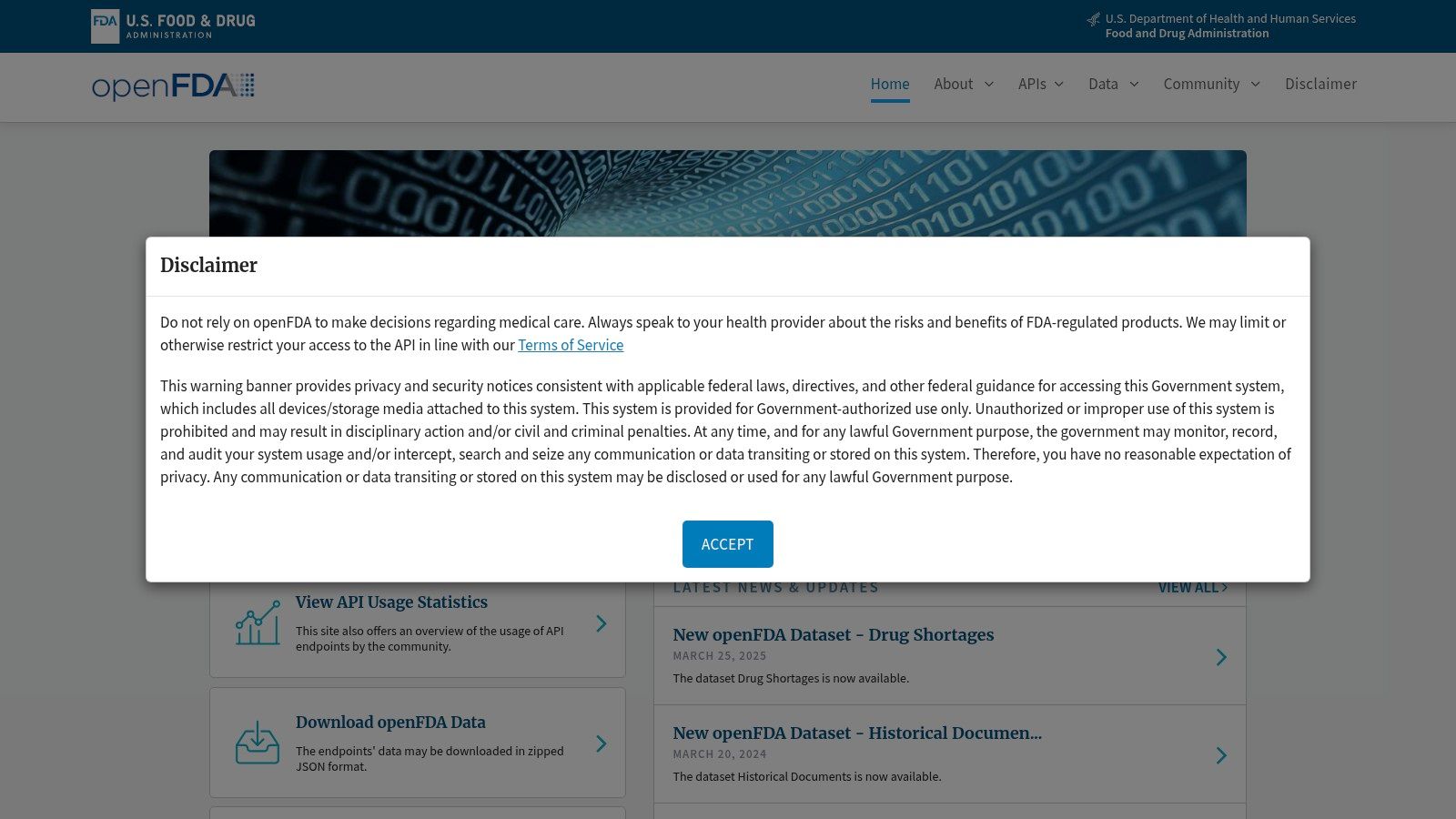
OpenFDA's data is presented in structured, machine-readable formats, making it ideal for integration into various applications. For example, medical device manufacturers can use the API to monitor recalls related to their products or competitor products, identify potential safety issues, and proactively address them. Healthcare technology companies can integrate OpenFDA data into their platforms to provide clinicians with real-time information on drug interactions, adverse events, and recall information, directly at the point of care. Researchers can utilize the vast datasets for pharmacovigilance studies, analyzing trends in adverse events, and identifying potential drug safety signals. Hospital and clinic IT departments can leverage OpenFDA to improve internal systems for drug safety surveillance and recall management. Similarly, academic institutions and medtech startups can use OpenFDA data for research and development, contributing to advancements in medical technology and patient care. Companies working with DICOM communication and transfer can potentially integrate recall information related to imaging devices, enhancing their services with crucial safety updates.
Features and Benefits:
- Access to adverse drug event reports: Identify potential safety risks and trends related to specific drugs.
- Drug product labeling information: Access detailed information about drug ingredients, usage instructions, and warnings.
- Medical device recall data: Stay informed about recalled devices, reasons for recall, and recommended actions.
- Food recall enforcement reports: Monitor food recalls, understand the reasons behind them, and protect consumers.
- Structured data formats: Easily integrate data into applications and analytical tools.
- Free access: No cost barrier to entry for basic usage.
- Well-documented API: Comprehensive documentation simplifies integration and usage.
- Regular updates: Ensures access to the latest regulatory information.
Pros:
- Free access to valuable regulatory data.
- Well-documented API with usage examples.
- Regular updates with new regulatory information.
- No authentication required for basic usage.
Cons:
- Rate limits for free tier usage. Heavier users might need to explore usage limits and potentially contact OpenFDA for higher throughput access.
- Data may have reporting delays. It's important to be aware that real-time data may not always be available.
- Limited to FDA-regulated products and reports.
- Requires understanding of regulatory terminology. Users should familiarize themselves with FDA terminology and data structures for optimal usage.
Implementation/Setup Tips:
Getting started with OpenFDA is relatively straightforward due to its well-documented API and lack of authentication requirements for basic usage. Developers can easily access the API documentation on the OpenFDA website, which includes numerous code examples and tutorials in different programming languages. Familiarizing oneself with the API's query parameters and data structures is essential for efficient data retrieval and analysis.
Comparison with Similar Tools:
While other databases might offer some similar data, OpenFDA's advantage lies in its comprehensive coverage of FDA-regulated products, its structured format, the readily accessible API, and its free availability. Commercial alternatives often come with subscription fees and might focus on specific subsets of regulatory data.
Website: https://open.fda.gov/
OpenFDA's free access, comprehensive datasets, and well-documented API make it an indispensable tool for anyone working with FDA-regulated products. Its ability to empower informed decision-making, enhance patient safety, and drive innovation in healthcare solidifies its place on this list.
10. Doximity API
The Doximity API offers a powerful gateway to the largest professional medical network in the U.S., connecting developers with over 70% of American physicians. This "LinkedIn for doctors" provides a unique opportunity for integrating with a verified physician directory, enabling secure communication, streamlining referrals, and accessing valuable professional medical data. Its focus on secure communication and established network within the U.S. healthcare system makes it an invaluable tool for targeted engagement within the medical community.
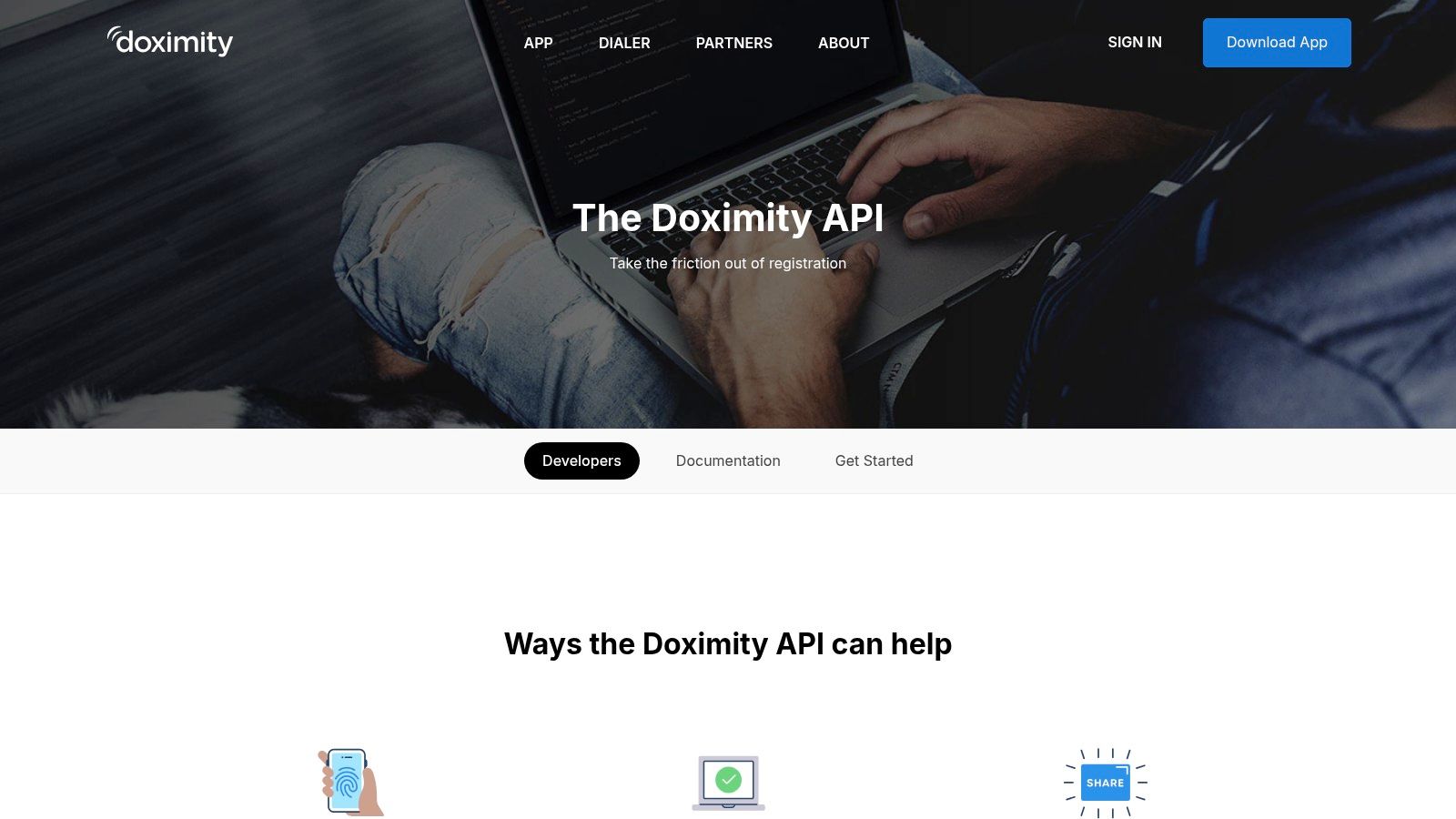
For medical device manufacturers, the Doximity API can facilitate targeted outreach to physicians for product demos, clinical trials recruitment, and post-market surveillance. Healthcare technology companies can leverage the API to integrate their solutions directly into physicians' workflows, enhancing care coordination and patient engagement. Medical researchers can utilize the platform for physician recruitment for studies, surveys, and data collection. Hospital and clinic IT departments can improve internal communication and referral management processes by integrating with Doximity's secure messaging and directory services. Even academic institutions focused on medical imaging can use the platform to connect with practicing physicians for research collaborations and data sharing opportunities. Medtech startups, particularly those focusing on telehealth or secure communication, can leverage Doximity's established network and infrastructure to reach their target audience. Similarly, companies specializing in DICOM communication and transfer could potentially explore integrations for secure image sharing and consultation within the Doximity network.
Features and Benefits:
- Physician Directory Access and Search: Locate and connect with physicians based on specialty, location, and other criteria, simplifying physician identification and outreach.
- Secure Messaging: HIPAA-compliant communication channels facilitate secure messaging and collaboration between healthcare professionals.
- Digital Faxing and Document Sharing: Securely exchange medical documents, such as referrals, lab results, and clinical notes.
- Telehealth Integration Capabilities: Potential for integrating telehealth platforms to streamline virtual consultations and remote patient monitoring.
- Credential Verification: Verify physician credentials and board certifications, ensuring data accuracy and trustworthiness.
Pros:
- Extensive Network: Unparalleled access to a vast network of verified U.S. physicians.
- HIPAA Compliance: Built-in security features and adherence to HIPAA regulations ensure secure communication and data handling.
- Robust Authentication: Strong authentication protocols protect sensitive information and maintain user privacy.
- Streamlined Referrals: Simplified referral workflows enhance care coordination and improve patient access to specialists.
Cons:
- Restricted Access: Requires partnership approval from Doximity, limiting open access for all developers.
- Physician-Centric: Primarily focuses on physician-to-physician interactions, with limited patient-facing functionalities.
- Limited Public Documentation: Compared to other APIs, Doximity offers less publicly available documentation, potentially increasing the learning curve.
- U.S. Focus: Physician data is primarily U.S.-centric, limiting its applicability for international projects.
Pricing and Technical Requirements:
Specific pricing information and technical requirements for the Doximity API are not publicly available. Interested developers need to contact Doximity directly for partnership inquiries and access to detailed documentation. This partnership-based approach reflects Doximity's emphasis on maintaining the security and integrity of its professional network.
Implementation and Setup Tips:
Due to the restricted access model, implementation and setup require establishing a partnership with Doximity. Developers should prepare a clear outline of their intended use case, target audience, and how their application aligns with Doximity's mission and values. Once approved, Doximity provides dedicated support and documentation to guide the integration process.
Website: https://www.doximity.com/developers
Doximity API earns its place on this list because of its unparalleled access to the U.S. physician community. Despite the restricted access and U.S. focus, the platform's secure communication, extensive directory, and potential for integration with existing healthcare workflows offer significant value for developers targeting the medical professional market. For projects requiring direct engagement with physicians, particularly within the United States, the Doximity API presents a powerful and potentially indispensable tool.
Medical APIs: Side-by-Side Comparison
| Option | Core Features ✨ | Quality ★ | Target Audience 👥 | Value Proposition 💰 |
|---|---|---|---|---|
| 🏆 PYCAD | End-to-end AI imaging (data, training, deployment) | 10+ projects & high diagnostic accuracy | Medical device makers, healthcare tech | Tailored, efficient solutions |
| Human API | Unified EHR data access & normalization | Comprehensive & HIPAA compliant | Health organizations & developers | Streamlined integration, premium pricing |
| IBM Watson Health | AI-powered clinical decision support & image analysis | Clinically validated & advanced | Clinicians, research institutions | Robust analytics with higher costs |
| FHIR | Standardized, RESTful clinical data exchange | Interoperable & widely adopted | Developers & healthcare providers | Industry standard, cost-effective |
| NCBI API | Access to biomedical literature & genomic data | Extensive, reliable, government-backed | Researchers & bioinformaticians | Free & comprehensive data access |
| Infermedica API | AI-driven pre-diagnosis & symptom analysis | Sophisticated & multilingual | Telehealth platforms, clinics | Premium features for accurate triage |
| DrChrono API | Complete EHR management (scheduling, billing, e-prescribing) | Well-documented & integrated | Independent practices & specialists | All-in-one practice management |
| Redox | Middleware for multi-EHR integration | Simplifies connectivity & secure | Healthcare IT departments | Reduces development time, subscription-based |
| OpenFDA | Access to FDA datasets (adverse events, recalls) | Free, well-documented, regulatory-focused | Developers, regulatory analysts | Valuable regulatory data, free access |
| Doximity API | Physician network, secure messaging & referrals | Robust, HIPAA-compliant, verified | Healthcare professionals & networks | Exclusive network access, partnership-based |
The Future of Healthcare is Connected
The medical APIs explored in this article—from image processing tools like PYCAD to interoperability solutions like FHIR and Redox, diagnostic aids like Infermedica, and data resources like NCBI and OpenFDA—offer a powerful toolkit for transforming healthcare. These tools enable developers and healthcare providers to build innovative solutions that improve patient outcomes, streamline workflows, and drive advancements in medical research. Key takeaways include the importance of considering data privacy and security, the need for seamless integration with existing systems, and the potential for these APIs to personalize medicine and empower patients.
Choosing the right API depends on your specific needs. If you're focused on medical image analysis, a specialized tool like PYCAD might be ideal. For interoperability challenges, FHIR and Redox offer robust solutions. When implementing these tools, factors like scalability, cost, and compliance with regulations like HIPAA are crucial. For developers seeking to maximize the impact and adoption of their medical APIs, robust and user-friendly documentation is essential. Understanding how to present complex technical information clearly can significantly influence a developer's decision to integrate with your API. Resources like the guide on API documentation best practices from DocuWriter.ai can provide valuable insights in this area.
The future of healthcare hinges on connectivity, and medical APIs are the key to unlocking that potential. By embracing these technologies and fostering collaboration, we can create a more efficient, patient-centered, and data-driven healthcare ecosystem.
Ready to explore the possibilities of medical image processing? PYCAD offers a suite of powerful tools for DICOM processing and analysis, seamlessly integrating with your existing workflows. Visit PYCAD to learn more and start building the future of medical imaging.



